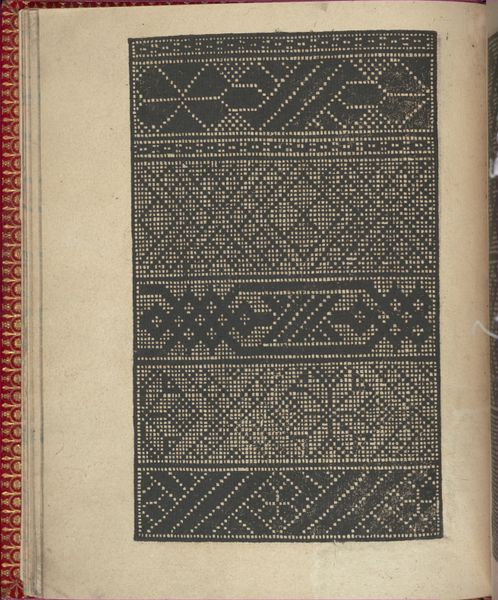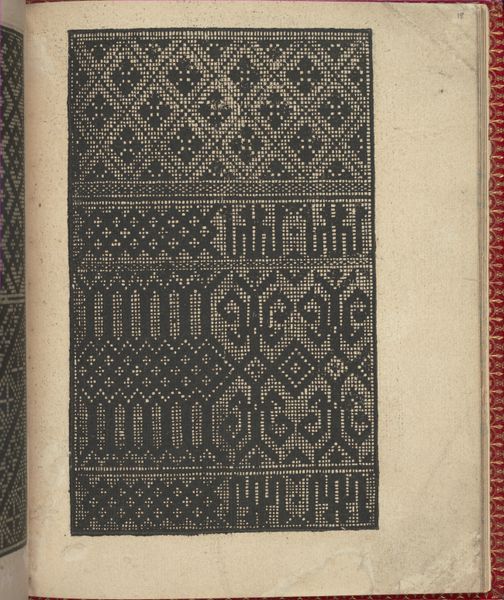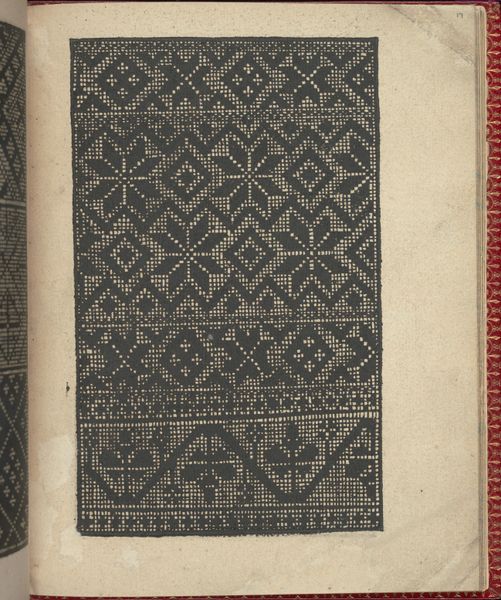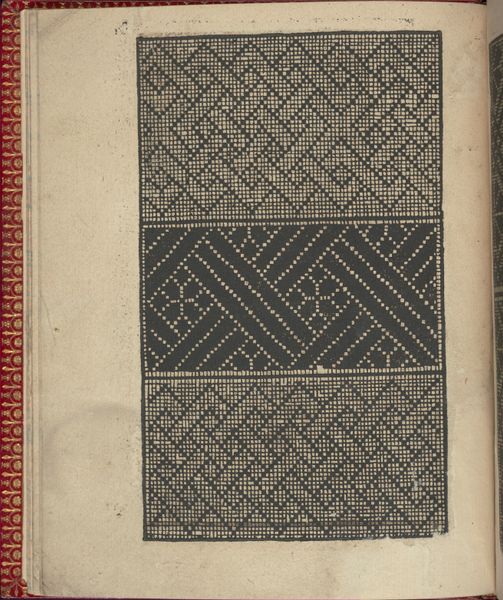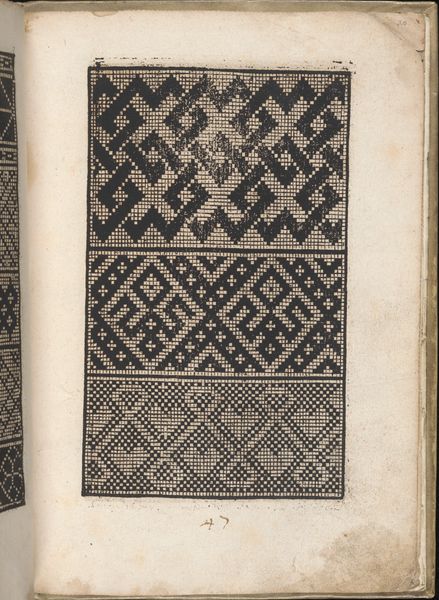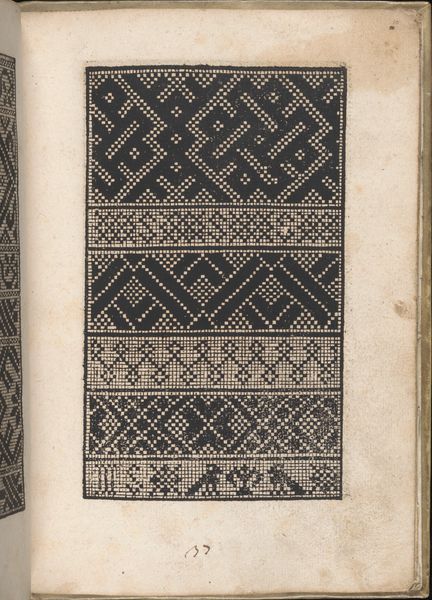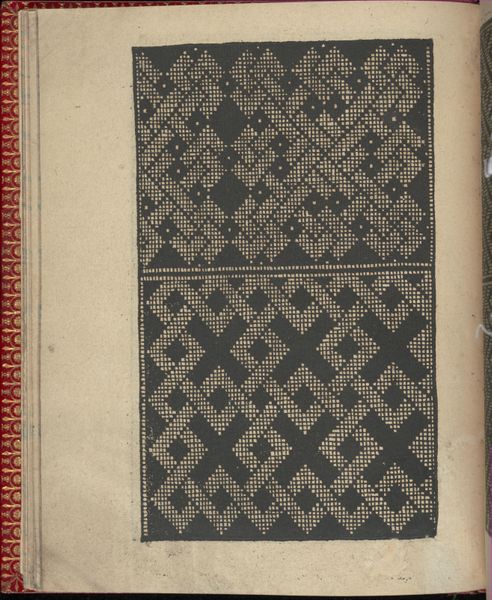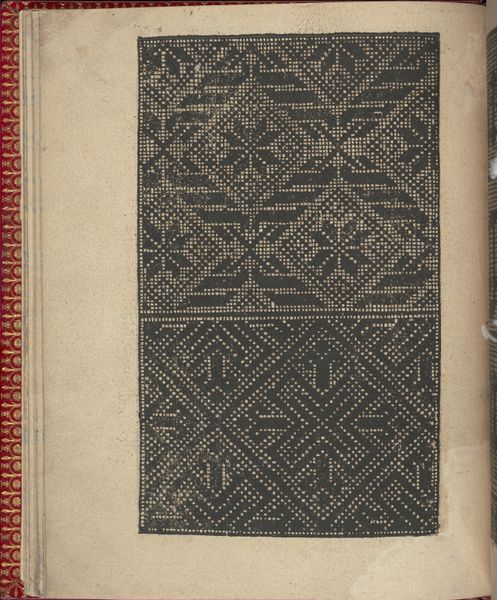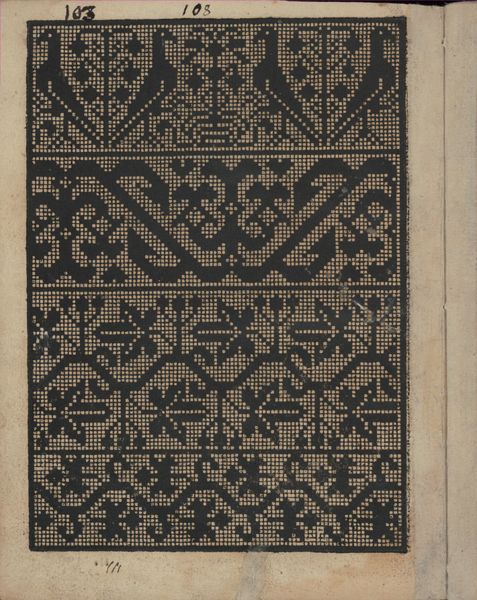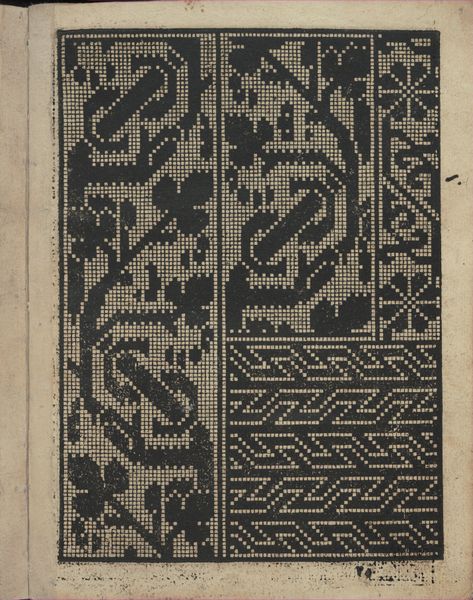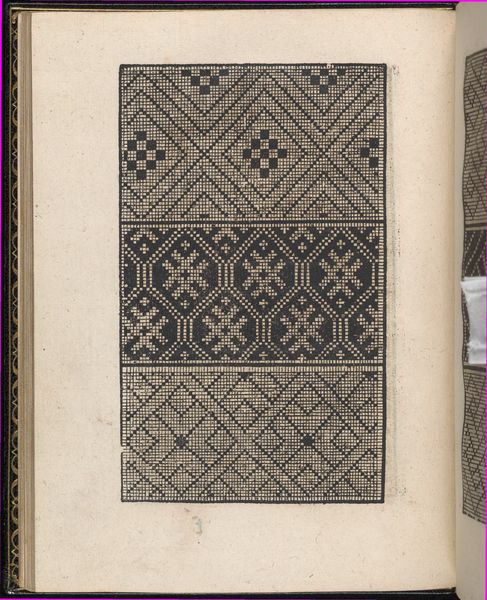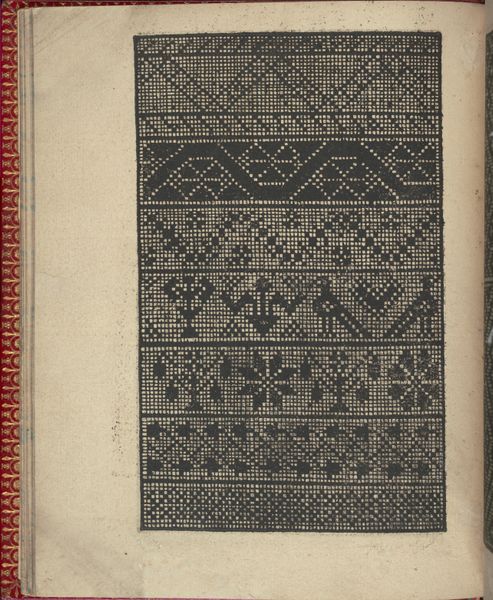
Ce est ung tractat de la noble art de leguille ascavoir ouvraiges de spaigne... page 6 (verso) 1527 - 1540
0:00
0:00
drawing, ornament, print, woodcut
#
drawing
#
ornament
#
medieval
# print
#
book
#
coloured pencil
#
geometric
#
woodcut
#
line
Dimensions: Overall: 6 7/8 x 5 11/16 in. (17.5 x 14.5 cm)
Copyright: Public Domain
Editor: This is page 6, verso, from "Ce est ung tractat de la noble art de leguille ascavoir ouvraiges de spaigne," dating from 1527 to 1540, and attributed to Willem Vosterman. It's a woodcut print showcasing various geometric patterns. It feels incredibly methodical, almost mathematical. What do you make of this piece? Curator: Well, beyond the geometry, let’s consider the social context. This wasn't simply decoration; it was a pattern book for needlework, offering designs specifically for Spanish embroidery. Embroidery, at that time, was very much a woman’s art. Editor: So, you're saying this book functioned almost like a subversive textbook? It was disseminating these patterns which allowed for self expression and even maybe a challenge of the dominant political status quo? Curator: Exactly. Consider the power dynamics at play: while women were often excluded from formal artistic training, they could express creativity and skill through textiles, potentially signaling status or quietly conveying personal narratives, or reinforcing it. And these pattern books provided a means of accessing and sharing that knowledge. Editor: It’s amazing to think about how something seemingly decorative can be so deeply intertwined with social and gender dynamics. Curator: Precisely! It challenges the conventional art history narrative that often overlooks these forms of cultural production. Editor: This has totally reshaped how I see this page. It's not just geometric design. I think this perspective completely changed my idea of medieval artwork. Curator: And that’s the goal. Art isn't created in a vacuum, and examining it through multiple lenses helps us appreciate its depth.
Comments
No comments
Be the first to comment and join the conversation on the ultimate creative platform.
